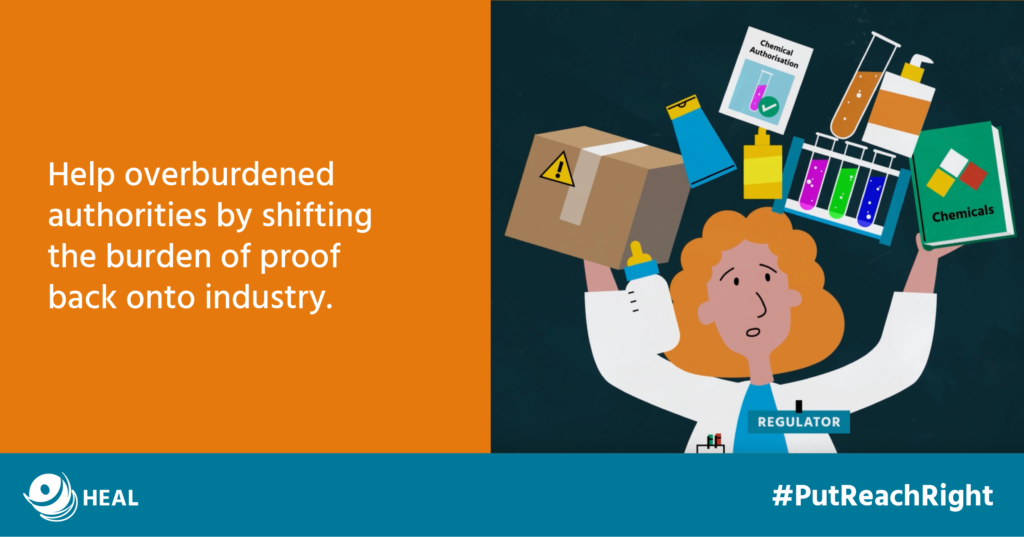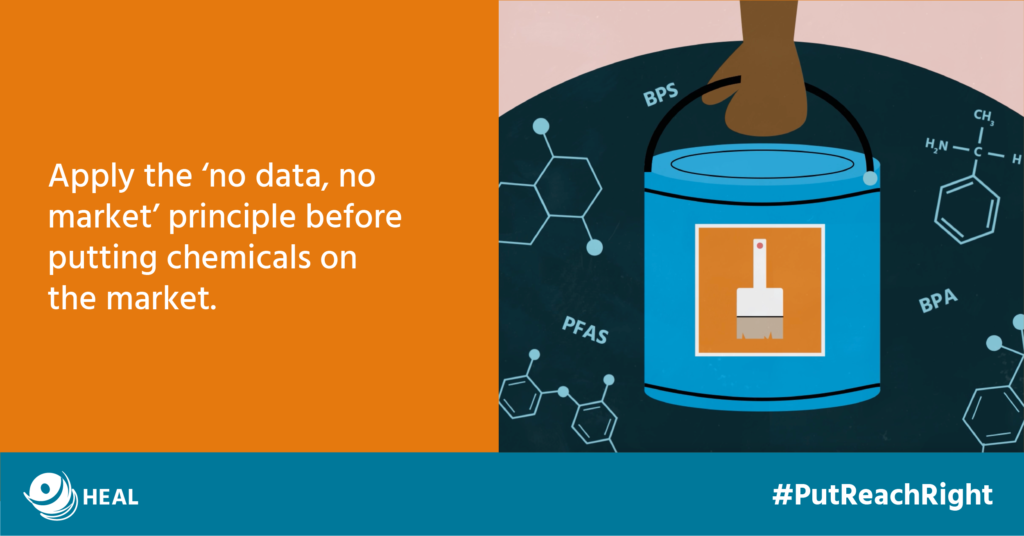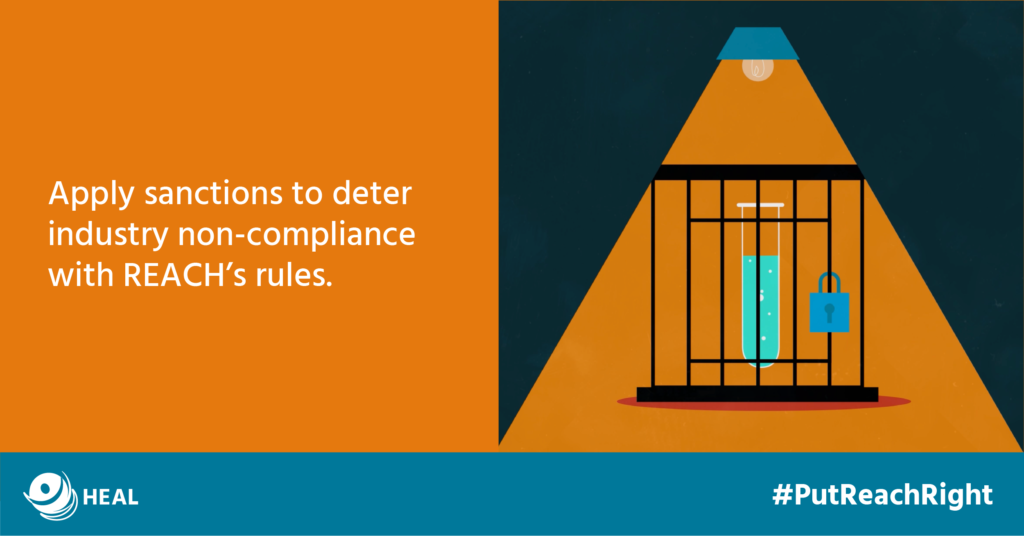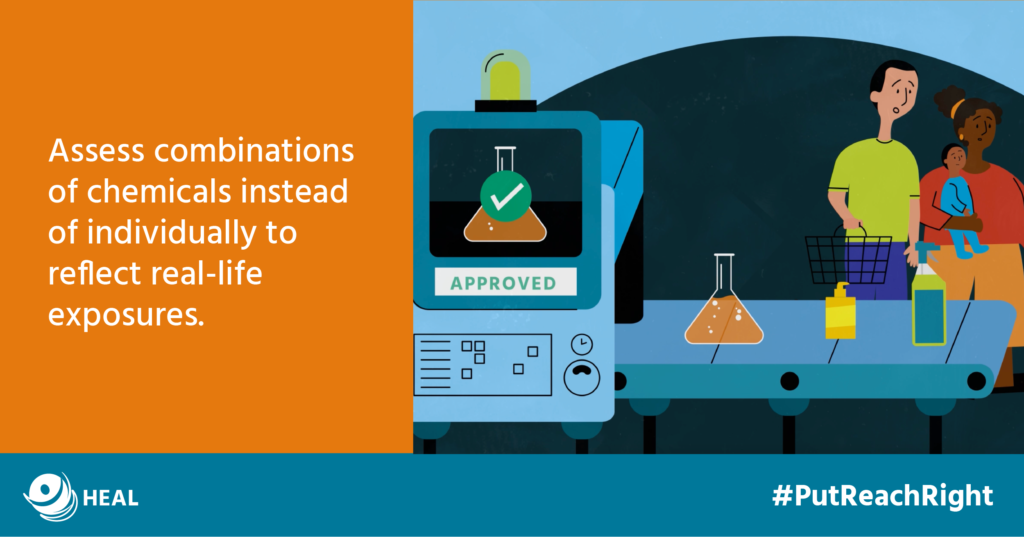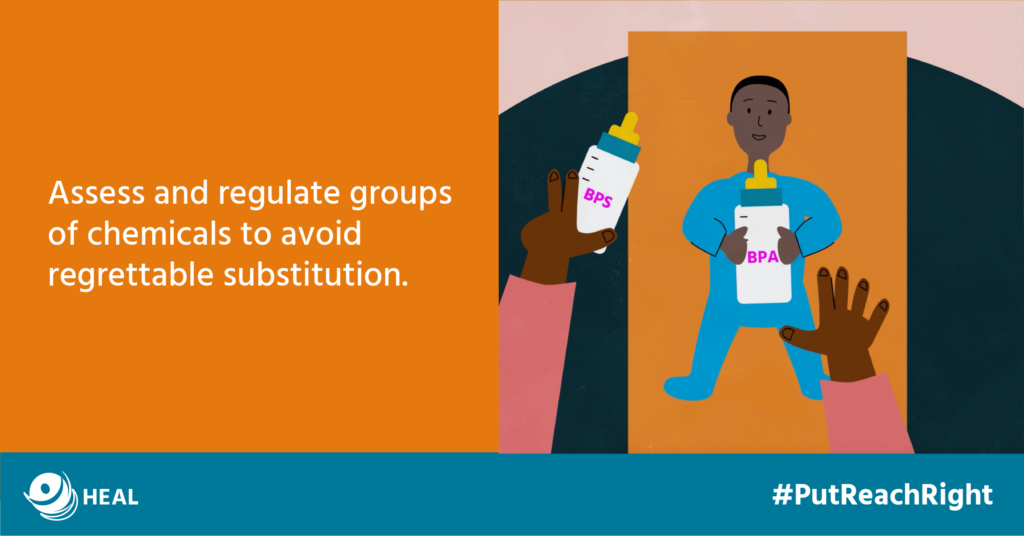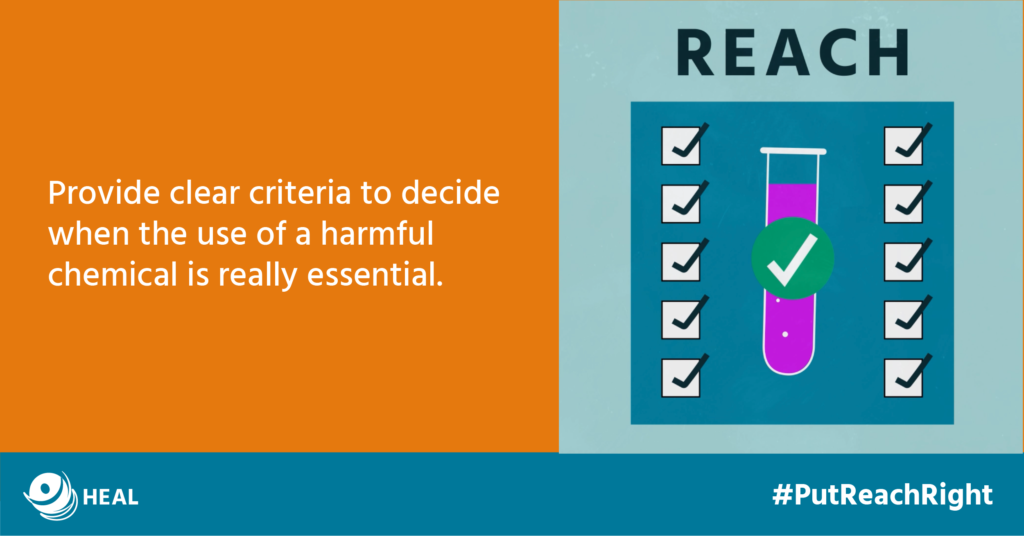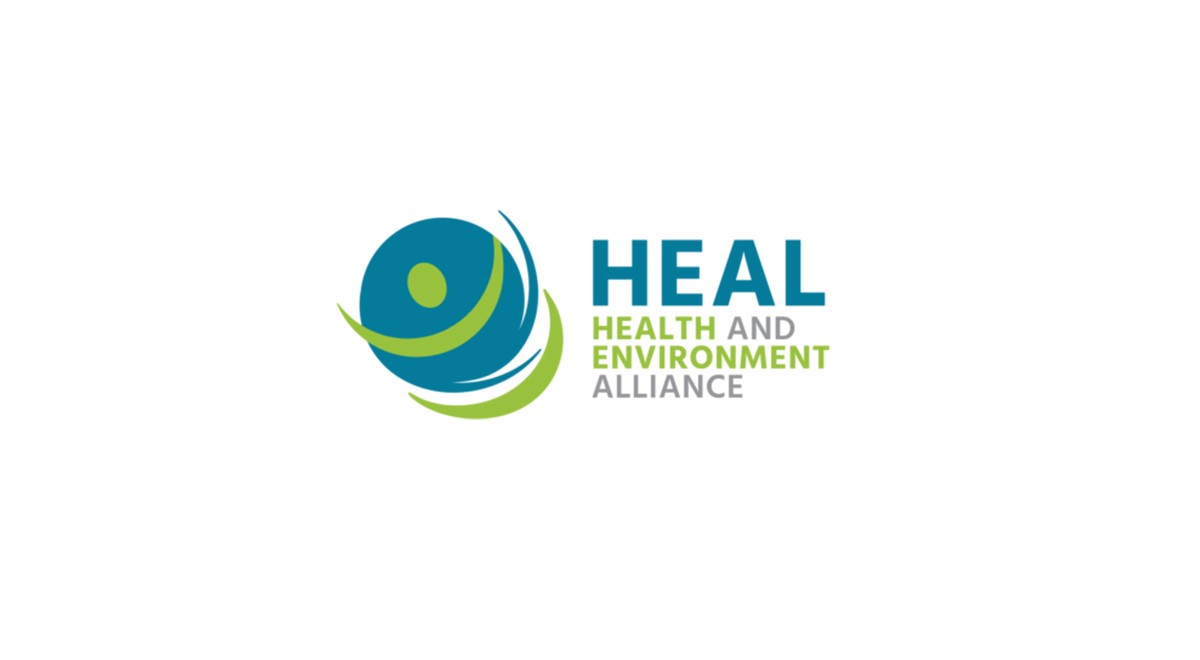Are you our new Communications Officer?
The REACH legislation sets out how the European Union registers, evaluates, authorises and restricts chemicals. The sorely needed overhaul of this juggernaut of EU chemicals legislation is an opportunity to strengthen its effectiveness in protecting our health and the environment through better and earlier identification of hazardous chemicals.
REACH provides the framework for how the EU registers, evaluates, authorises and restricts chemicals entering and in use on the EU market. First introduced in 2007, REACH applies to all chemical substances produced and imported into the EU, from those used in industrial processes to the chemicals used in our clothes, furniture, electrical appliances, and more.
But the reality is that REACH is neither efficiently, nor effectively being implemented. The regulatory process is riddled with many deficiencies and a lack of industry accountability. In fact, a recent report from the European Environmental Bureau found that it normally takes officials up to 13 years and 8 months to assess hazards of a single chemical substance. Well-known and -studied harmful substances such as bisphenol A, lead, and PVC are still widely present on the market today.
Under the 2020 Chemical Strategy for Sustainability (CSS), the European Commission committed to publish a proposal to reform REACH by the end of 2022. However, this deadline has been repeatedly extended, most recently to the end of 2023. HEAL is concerned that the level of ambition to address current regulatory failures is being undermined, with the risk that powerful chemical industry interests are taking precedence over the protection of human health and the environment.
This video is also available with French or Spanish subtitles.
Novel research has demonstrated that we have surpassed the planetary boundary for chemical pollution and urgent action to adequately reform REACH as soon as possible is critical to prevent further harm.
Broken promises of REACH
While REACH has in theory many of the right tools to protect health and the environment against hazardous chemicals, in practice it is failing to deliver. Broken promises include:
- The precautionary principle:
- Promise: The REACH regulation is underpinned by the precautionary principle, which is translated into regulatory actions such as no data, no market, safe substitution, and burden of proof on industry. Theoretically, the precautionary principle allows REACH to address not only fully characterised risks, but also those that are emerging. According to this principle, when scientific uncertainties exist related to the evaluation of the risks posed by a chemical for human health and the environment, authorities can take measures in order to prevent or avoid serious or irreversible harm.
The European Environmental Agency (EEA) refers to the precautionary principle as “a general rule of public policy action to be used in situations of potentially serious or irreversible threats to health or the environment, where there is a need to act to reduce potential hazards before there is strong proof of harm, taking into account the likely costs and benefits of action and inaction”.
- Reality: The precautionary principle is not fully applied, as illustrated by the long delays for REACH processes (such as evaluations of chemicals) and the large number of harmful substances currently entering and remaining on the EU market without comprehensive data proving their safety.
- No data, no market:
- Promise: If a company provides insufficient data on the hazards a chemical poses to health and the environment, then authorities will not grant it access on the EU market. Chemical companies applying for entrance into the EU market via registration are legally required to provide authorities with a set of safety data for them to assess.
- Reality: The ‘no data, no market’ principle is not sufficiently implemented and many chemicals are granted registration and entrance onto the EU market without industry providing all legally required data. According to the European Environment Agency, out of the 100,000 chemicals present on the European market, only 500 have been extensively characterised for their hazards and exposures – referring to the situation as ‘the unknown territory of chemical risks’. Authorities have just three weeks to assess all the chemicals applying for registration, and ECHA lacks resources to thoroughly check the quality of data for all incoming substances.
- Burden of proof is on industry:
- Promise: One of the core principles of REACH is that it is up to industry – not public authorities – to provide sufficient information to prove the safety of their substances upon registration. If industry asks for continued use of known harmful substances at authorisation and restriction stages, it must demonstrate safe use with effective risk management measures as well as the absence of suitable alternatives.
- Reality: Currently, the failure to implement the ‘no data, no market’ principle at registration stage by providing registration numbers to incomplete dossiers de facto shifts the burden of proof from industry to assessing authorities. This is also a problem further down the process. It is still very burdensome for member states’ authorities to bring forward restriction proposals when they have substantiated concerns that the use of harmful substances leads to unacceptable risk to human health or the environment. Finally, the authorisation process still casually allows the continued use of too many substances of very high concern, without adequate industry justification, even when safer alternatives are available.
- The polluter pays principle:
- Promise: Chemical companies that pollute will bear the costs of removing and managing contaminants to prevent further harm to human health and the environment.
- Reality: Industry fees incurred during the REACH process do not come close to covering the administrative costs of adequately regulating chemicals under REACH, with public authorities lacking resources. Not to mention, REACH fees act as a sort of entry cost onto the EU market but do not cover the costs of managing chemicals once on the market, nor their impact throughout their life cycle. In essence, polluters are not held responsible for the associated health or environmental costs, which are ultimately borne by society.
- Reality: Industry fees incurred during the REACH process do not come close to covering the administrative costs of adequately regulating chemicals under REACH, with public authorities lacking resources. Not to mention, REACH fees act as a sort of entry cost onto the EU market but do not cover the costs of managing chemicals once on the market, nor their impact throughout their life cycle. In essence, polluters are not held responsible for the associated health or environmental costs, which are ultimately borne by society.
- Transparency throughout the REACH process:
- Promise: Complete data and clear rationale for decisions made throughout the REACH processes about chemical management will be made publicly accessible to citizens and governments alike. Transparency is threaded throughout the legal text of REACH as a means to ensure compliance and gain public trust for effective enforcement of the law.
- Reality: Although authorities strive for a more transparent chemical regulatory framework under REACH, there are still improvements to be made. The rationale for some regulatory decisions, for example when derogations are given for the continued use of a chemical, are not always easy to understand. REACH also currently does not require industry to annually update information in a public database on alternatives that could be used to phase out substances of very high concern.
REACH’s limitations
Important shortcomings within the legislation implementation and enforcement include:
- Industry non-compliance in providing sufficient data when registering chemicals is contributing to data gaps, bottlenecks, and delays in the evaluation process.
- Unacceptably high burdens placed on authorities across the different steps of hazard identification and risk management are significantly slowing or blocking implementation of protective measures, leaving harmful chemicals on the market.
- Regrettable substitution has become common practice as industry continually replaces harmful chemicals already restricted or banned with new, less well studied chemicals possessing similar intrinsic properties and likely similar (or even more harmful) effects.
- Unjustified derogations are granted by authorities during REACH’s authorisation and restriction processes as a result of a lack of transparency and prioritisation of industry interests over human health and the environment in risk management decisions.
Until these regulatory failures are adequately addressed, REACH will continue to fall short of its promises, continuously allowing harmful chemicals on the EU market that pollute our environment and put people’s health at risk.
About the EU Chemicals Strategy for Sustainability:
The Chemical Strategy for Sustainability (CSS) aims to set out a new toxic-free hierarchy in chemicals management, prioritising the use of safe chemicals and minimising exposure to harmful ones. Specific revisions promised in the Chemical Strategy include:
- Zero tolerance approach to non-compliance
- Banning the most harmful chemicals, such as PFAS chemicals, unless their use is deemed essential.
- Accounting for combined exposures to multiple chemicals instead of just looking at one at a time in order to assess real-life chemical hazards and risks.
- Incentivising innovation and the development of chemicals that are safe and sustainable by design.
- Ensuring that hazardous chemicals banned in the EU will not be exported to other countries.
The revision of REACH is an important pillar to allow for those promises to materialise and, ultimately, to better protect public health and the environment.
HEAL’s key demands for the REACH reform
It is critical that the European Commission’s commitment to swiftly revise REACH is met in order to make meaningful progress in achieving a healthier and more sustainable environment. The Chemical Strategy’s promise sets out to do just this. HEAL has laid out six key demands for the revision of REACH to meet these goals:
- Demand 1: Shift the burden of proof back onto industry and make it easier for authorities to regulate harmful chemicals
Reduce the burden of proof on authorities to regulate a chemical of concern and provide a simpler mechanism for member states to take action based on concerns of harm.
- Demand 2: No data, no market
At the moment, chemicals are put on the market without sufficient and adequate data to prove they are safe. The registration process needs to be upgraded, including through the strengthening of data requirements provision for companies before they can put their chemicals on the market. Strengthening this phase is fundamental to ensure that the rest of the REACH processes move more quickly and authorities to have adequate information to support analyses and next steps.
- Demand 3: Legal provisions to allow sanctions for non-compliance
The EU Chemicals Strategy promised a zero-tolerance approach for non-compliance. Disincentivising non-compliance by fining chemical companies for not meeting requirements under REACH and breaking the law would provide a mechanism for enforcement.
- Demand 4: Assess combinations of chemicals representing real-life exposures
The EU Chemicals Strategy promises to act to “account for the cocktail effect of chemicals when assessing risks from chemicals.” Science has clearly demonstrated the ability to account for differing effects due to real-life exposures to many chemicals at once. It’s time for policy to catch up with science and account for this by applying a mixture assessment factor (MAF).
- Demand 5: Assess and regulate entire groups of chemicals (instead of one at the time)
REACH promotes safe substitution, but industry often swaps harmful chemicals already restricted or banned with less well studied chemicals possessing similar (or even more) harmful effects on health. This practice is known as regrettable substitution. To prevent this from happening, REACH must allow the assessment and regulation of entire groups of chemicals, instead of just one chemical at a time.
Furthermore, grouping chemicals could further simplify REACH assessment processes, reducing the burden on authorities, while incentivising companies to invest into safer alternatives.
- Demand 6: Clear criteria for what constitutes an essential use of a harmful chemical
Some hazardous chemicals are not easy to replace overnight, because their uses might currently be critical to ensure health and safety, or the functioning of society. However, too many exemptions currently allow continuing the use of known harmful chemicals without proper justifications and while safer alternatives exist. It is therefore necessary to establish clear and transparent criteria for when the continued use of those substances can be justified and integrate them in REACH. Criteria for essential use must promote the aim of safe substitution by preventing unjustified derogations, and streamlining and shortening the decision-making processes for restrictions and authorisations.
Find out more about HEAL’s work on REACH:
- HEAL reports, briefings, letters and contributions to public consultations:
- CHEM Trust, HEAL and EEB comments on REACH revision Information Requirements, as follow-up to CARACAL-48, 28/3/23 (April 2023)
- Briefing REACH reform: HEAL’s key demands for health-protective upgrades of authorisation and restriction (March 2023)
- Briefing: REACH reform: HEAL’s key demands for health-protective upgrades of registration and evaluation (February 2023)
- Comments following CARACAL 44 discussion on options to implement the extension of the generic approach to risk management in the REACH regulation (March 2022)
- Joint comments from CHEM Trust, EEB and HEAL on considerations for extended REACH information requirements (February 2022)
- Joint comments from the EEB and HEAL on the proposal to reform the REACH registration and evaluation process (February 2022)
- Joint health and environmental NGOs’ comments to the update of REACH annexes in relation to endocrine disruption properties as follow-up to the CASG-ED6 meeting (February 2022)
- HEAL comments on CARACAL 43 proposals for reform of REACH authorisation and restriction (February 2022)
- HEAL input on REACH revision roadmap consultation (May 2021)
- Environmental health groups urge national governments to play their part to ensure reforms of key chemical legislations make speedy progress (October 2022)
- Letter to European Commission: Civil society vision on how the EU can deliver the European Green Deal and address the multiple crises we face (October 2022)
- Joint position paper: Delivering a toxic-free environment under REACH (April 2022)
- Joint letter: High time to make certain that the EU is on the right path to a toxic-free environment (September 2022)
For HEAL reports, briefings, letters and position papers in relation to the general implementation of REACH, please click here.
- HEAL infographics and videos:
- Video: HEAL’s six demands for a health-first reform of REACH. Also available in French or Spanish (March 2023)
- HEAL press releases, blogs and opinion pieces:
- Nine hazardous chemicals added to REACH’s blacklist: BPS, melamine, isobutylparaben, PFHpA, and more (January 2023)
- Environmental health groups urge national governments to play their part to ensure reforms of key chemical legislations make speedy progress (October 2022)
- EU chemicals strategy: speedy implementation steps key to truly protect people’s health (October 2020)
- Other resources:
- 7 myths helping the chemicals industry fly under the radar, ClientEarth (October 2022)
- The Need For Speed – Why it takes the EU a decade to control harmful chemicals and how to secure more rapid protections, European Environmental Bureau (EEB) (July 2022)
- The unknown territory of chemical risks, European Environment Agency (November 2020)

